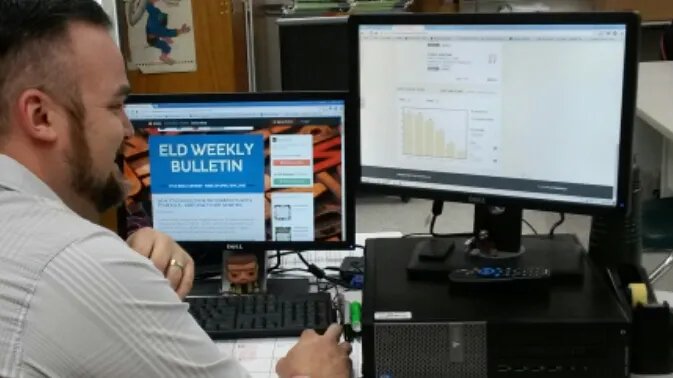Tulsa Public Schools Implements InClass to Improve Collaboration and Better Support ELLs


Tulsa Public Schools Implements InClass to Improve Collaboration and Better Support ELLs
As a fifth year ELD teacher at a high school where three out of four students come from households that speak a language other than English, I know first-hand how important teacher collaboration is. When instructing this diverse student population, the reality that “all teachers are language teachers” is evident in every classroom.
When I began teaching ELD it became clear to me very quickly that communication between departments was lacking to a point where it was affecting student achievement. As our student population had shifted in the previous years, the needs of our students had changed. It seemed as though the response to this demographic change was to “circle the wagons” around the way things had been done and continue to push the problems of language learners to the periphery. Since then, there has been a welcome shift in my building--and in my district--to the realization that until we address the underlying language hurdles that our students face, we will not see the achievement we are working towards.
Now that we are fully engaged teaching language in every class, the need for collaboration is front and center. However, as in all things education, the hurdles we are facing are time and funding. The ever mounting demands on the time of both our ELD team and classroom teachers make the collaboration that is so sorely needed inconsistent.
This is where InClass is really saving the day. By giving us the ability to really understand an individual student’s needs at a glance and a platform to discuss that student directly, it has changed the game entirely. Now teachers have the ability to access the information they need to make modifications in a quick and concise way. This ease of access and simplified way of delivering important student data is a testament to how well thought-out, teacher-centric technology can close the gap between our student’s needs and the time our teachers have to provide for those students.
As we move forward with InClass I look forward to a district-wide roll out. We have implemented the program with the teachers that have the highest concentration of ELL students and our experience so far has been very positive. The quality of collaboration has increased with our ability to discuss individual students with all of their data at our fingertips. InClass has really allowed us to sharpen our focus on each ELL student and how we engage them. I think once we have a building full of teachers who are able to collaborate in this way, we will have the reigns of a successful strategy that will begin to close the achievement gap in a meaningful way.